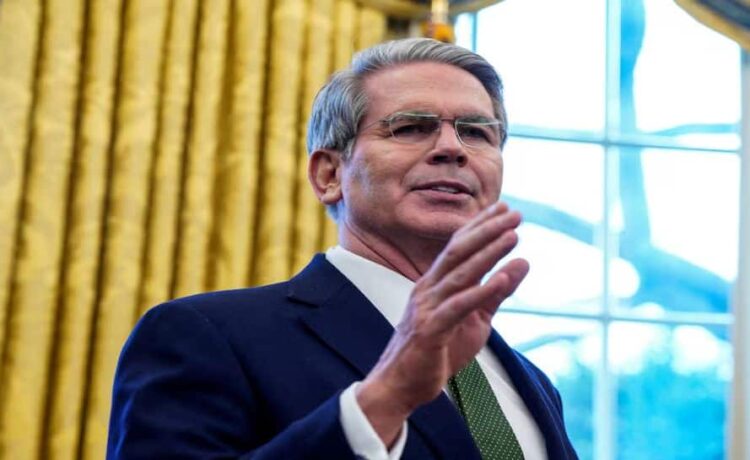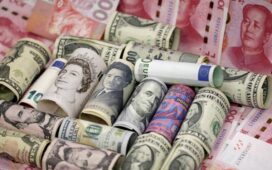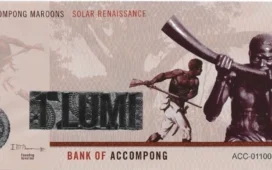India-US trade relations: The day a steep 50% tariff on Indian imports to the United States took effect (August 27), U.S. Treasury Secretary Scott Bessent made two striking statements that reflect both the economic friction and enduring strategic cooperation between the two nations.
Speaking with Fox News, he scoffed at the idea of the Indian rupee replacing the U.S. dollar in global trade, stating, “There are a lot of things I worry about. The rupee becoming a reserve currency is not one of them. The rupee is at an all-time low against the U.S. dollar.”
Fox News Anchor: Do you worry that India will set trade in the rupee and not the dollar? (Laughs)
US Treasury Secretary: There are a lot of things I worry about. The rupee becoming a reserve currency is not one of them. The rupee is at an all time low against the US dollar pic.twitter.com/4atw3LgdFd
— Shashank Mattoo (@MattooShashank) August 27, 2025
At the same time, commenting on the broader state of bilateral ties, he called the India-US relationship “complicated” but added, “At the end of the day, we will come together.”
‘America has the advantage in trade talks with India,’ says U.S. Treasury Secretary Scott Bessent pic.twitter.com/xudyzhm8jz
— Shashank Mattoo (@MattooShashank) August 27, 2025
‘The Rupee Is At An All-Time Low’
The interview took a sarcastic turn when the anchor mockingly asked Bessent, “Do you worry that India will set trade in the rupee and not the dollar?”
He responded with laughter and dismissiveness. “There are a lot of things I worry about. The rupee becoming a reserve currency is not one of them. The rupee is at an all time low against the U.S. dollar.”
Bessent’s public dismissal comes in the wake of growing discussions in BRICS about reducing dependence on the U.S. dollar and exploring alternative currencies for trade. While India has expressed interest in expanding the rupee’s global role, the U.S. treasury secretary’s remarks signal that Washington does not view India’s currency as a serious competitor on the global financial stage.
At the same time, India is bracing for the impact of the new 50% US tariffs. In response, New Delhi has launched an expansive counteroffensive strategy aimed at safeguarding its exports.
Officials have announced outreach campaigns across 40 global markets, targeting major economies like the United Kingdom, Japan, South Korea, Germany, France, Italy, Spain, Canada, Mexico, Russia and Australia with a focus on bolstering textile exports (one of the sectors expected to be hardest hit by the tariff spike).
U.S. President Donald Trump added fuel to the tension by publicly mocking India’s partnership with Russia.
“I don’t care what India does with Russia. They can take their dead economies down together, for all I care,” he said justifying the tariff hike with accusations of India’s high trade barriers and limited commerce with the United States.
Heavily reliant on U.S. markets, India’s gems, jewellery and textile industries are likely to bear the brunt of the new tariffs.
Trade officials in New Delhi say the door for dialogue remains open. A Reuters report cited government sources saying that India is still hopeful of a shift in Washington’s position.
‘…But We Will Come Together’
During his Fox Business appearance, Bessent elaborated on the broader state of bilateral relations, describing the U.S.-India equation as “complicated”. He referred to the personal rapport between PM Modi and President Trump but admitted to frustrations over stalled negotiations.
“President Trump and Prime Minister Modi have a very good relationship. It is not just over the Russian oil. The Indians came in early after Liberation Day to start negotiating on tariffs and we still do not have a deal,” he said.
The treasury secretary expressed dismay over India’s continued purchase of discounted Russian oil, accusing New Delhi of “profiteering”.
“There is many levels going on here. I do think India is the world’s largest democracy, and the United States is the world’s largest economy. I think at the end of the day we will come together,” he added.
Anchor: India’s Foreign Minister said the US can stop buying Indian refined oil if it has a problem with New Delhi buying Russian oil
US Treasury Secretary: Well, India is the world’s largest democracy and America is the world’s largest economy. Eventually we will come together pic.twitter.com/gydKmpyoaB
— Shashank Mattoo (@MattooShashank) August 27, 2025
Bessent described India’s behaviour during trade talks as “performative”, blaming New Delhi’s alleged high tariffs and protectionist stance, especially in agriculture and midsize vehicle sectors, for the failure to reach a deal.
“I thought we would have a deal in May or June. I thought India could be one of the earlier deals and they kind of tapped us along,” he said.
He emphasised that the United States is a deficit country, while India enjoys a trade surplus, suggesting that New Delhi should be more concerned about escalating tensions.
“When there is a schism in trade relations, the deficit country is at an advantage. It is the surplus country that should worry. So, the Indians are selling to us,” he said.
A team of U.S. trade negotiators was scheduled to arrive in India on August 25. However, the visit was abruptly called off after President Trump declared the 50% tariff rate on August 6. Trade talks that began in February, soon after Modi’s visit to Washington, were expected to result in a deal by year-end. While both sides had signed terms of reference (ToR) for a deal, India’s refusal to open its markets more fully became a roadblock.
Russian Oil At The Heart Of It
The tariffs are widely seen as a penalty for India’s large-scale imports of Russian crude, which have become a key sticking point. In August, Trump announced the additional 25% tariff, atop an earlier 25% levy, directly linking the move to India’s oil purchases from Moscow. “They have been profiteering on it,” Bessent said.
India has maintained that its decision to buy Russian oil was made due to traditional suppliers diverting their exports to Europe. New Delhi also said the United States had “actively encouraged” India’s Russian oil imports to help stabilise global energy prices.
When Russia invaded Ukraine in February 2022, its share in India’s oil imports was below 2%. Since then, Russia has become India’s top crude supplier, accounting for 35-40% of imports.
The Indian government continues to assert that its oil purchase decisions are dictated purely by economic and commercial considerations. Officials clarified that Indian refiners have followed the US-imposed price cap, applicable only if Western shipping or insurance services are involved.
Despite Washington’s escalating rhetoric, no such tariffs have been imposed on China, which is the largest buyer of Russian oil. Bessent pressed for a more unified Western front against India’s crude imports.
China is ramping up purchases of Russian oil while Indian buying is slowing down, reports CNN
But the Trump administration is still refusing to place secondary tariffs on China for buying Russian energy pic.twitter.com/2ojp4HLeiW
— Shashank Mattoo (@MattooShashank) August 27, 2025
“Our European allies need to step up. I don’t see them threatening the tariffs on the Indians. As a matter of fact, they are the ones buying the refined products that has made from the Russian oil,” he said.
According to him, only Canada has shown readiness to join the United States in applying secondary tariffs on countries buying oil from Russia.
Ongoing Diplomacy
Despite the heavy tariffs, officials from India’s Commerce Ministry said lines of communication remain open. The ministry is in continuous touch with industry stakeholders to explore every option for easing the impact of the tariffs. India hopes diplomatic efforts and outreach will help revive talks and protect its export sectors.
While the rupee might be at a record low and tariffs at a record high, India and the United States, two of the world’s biggest democracies and economies, continue to walk the tightrope of diplomacy, trade and strategic convergence.






